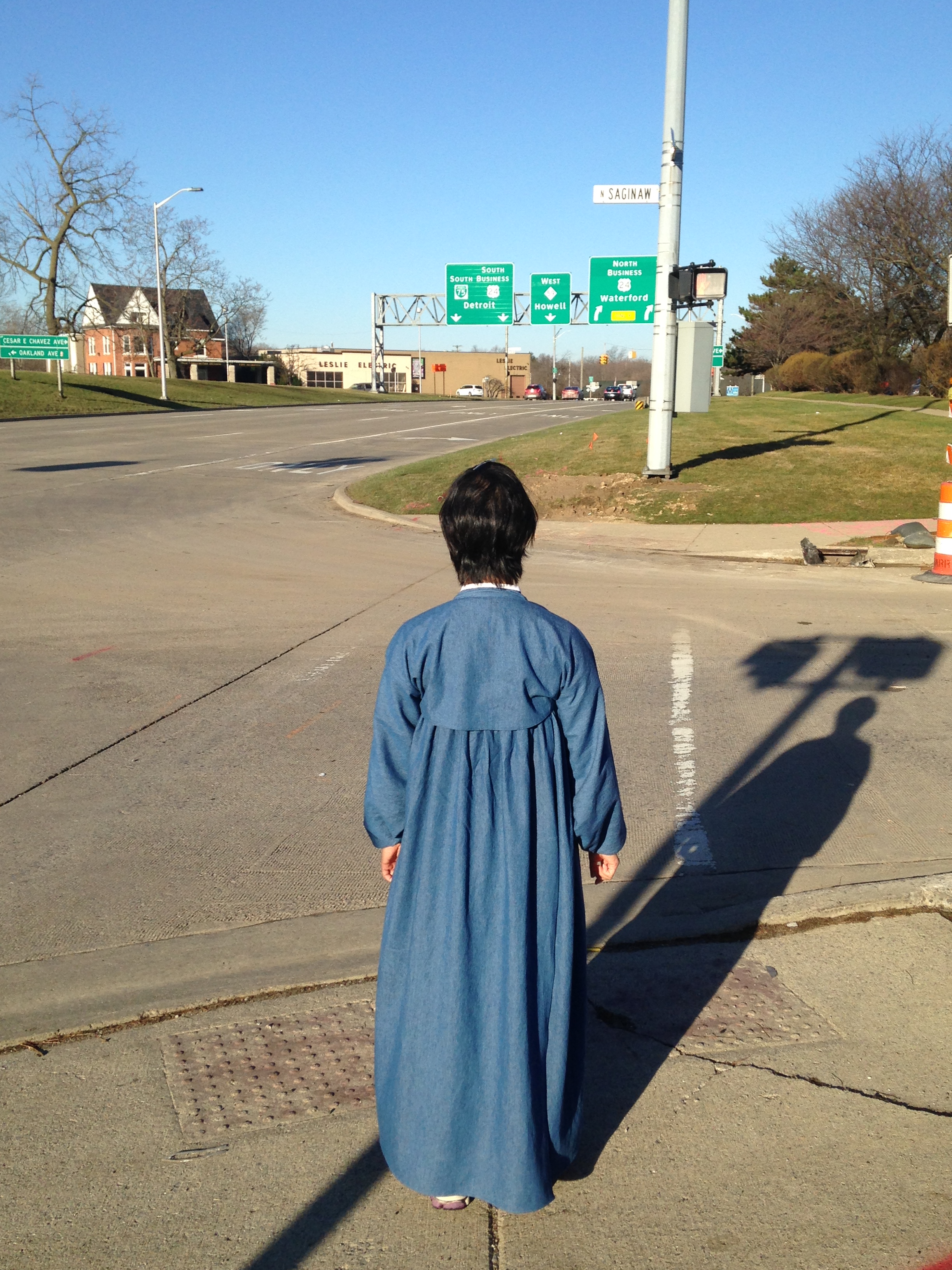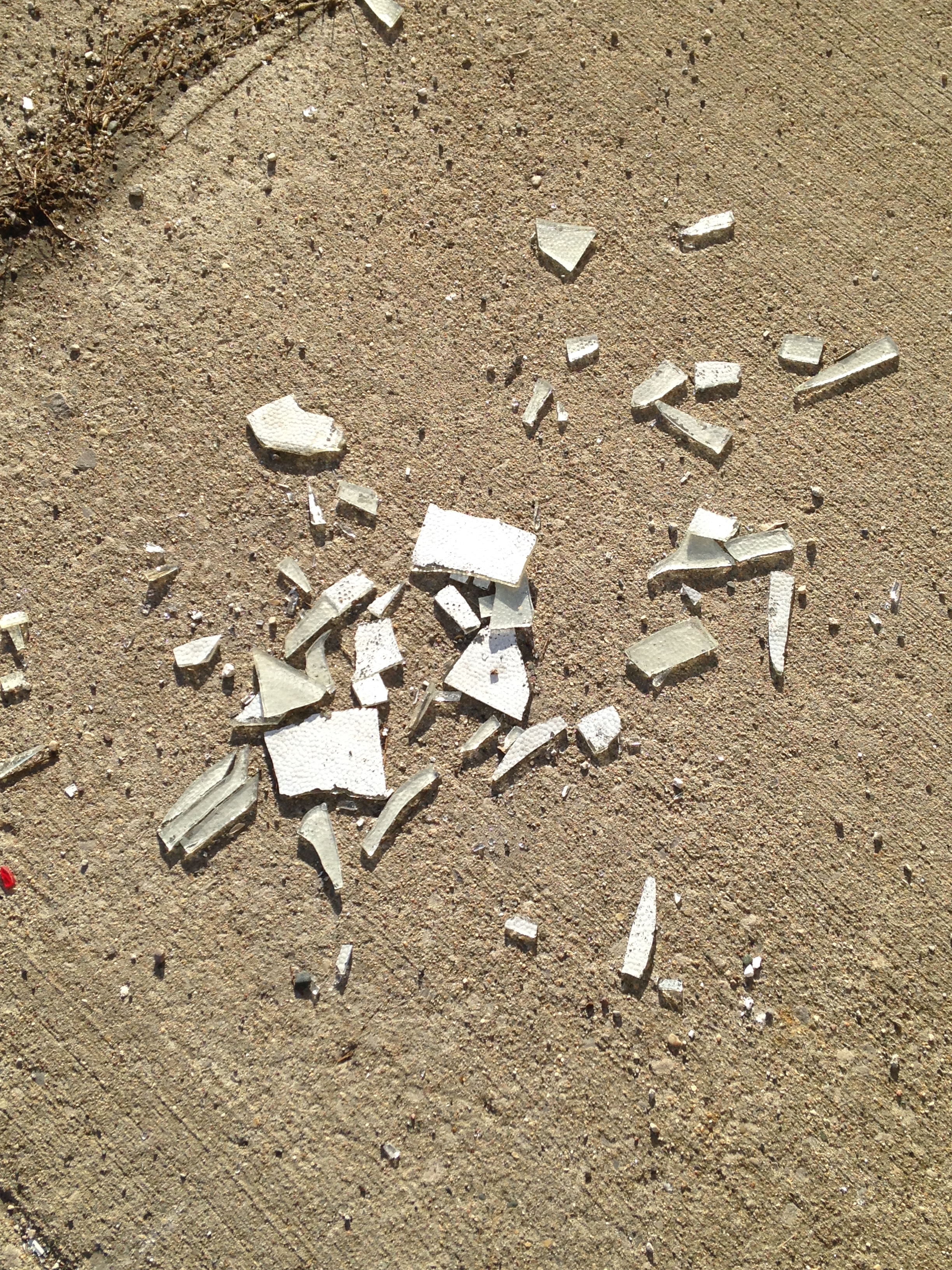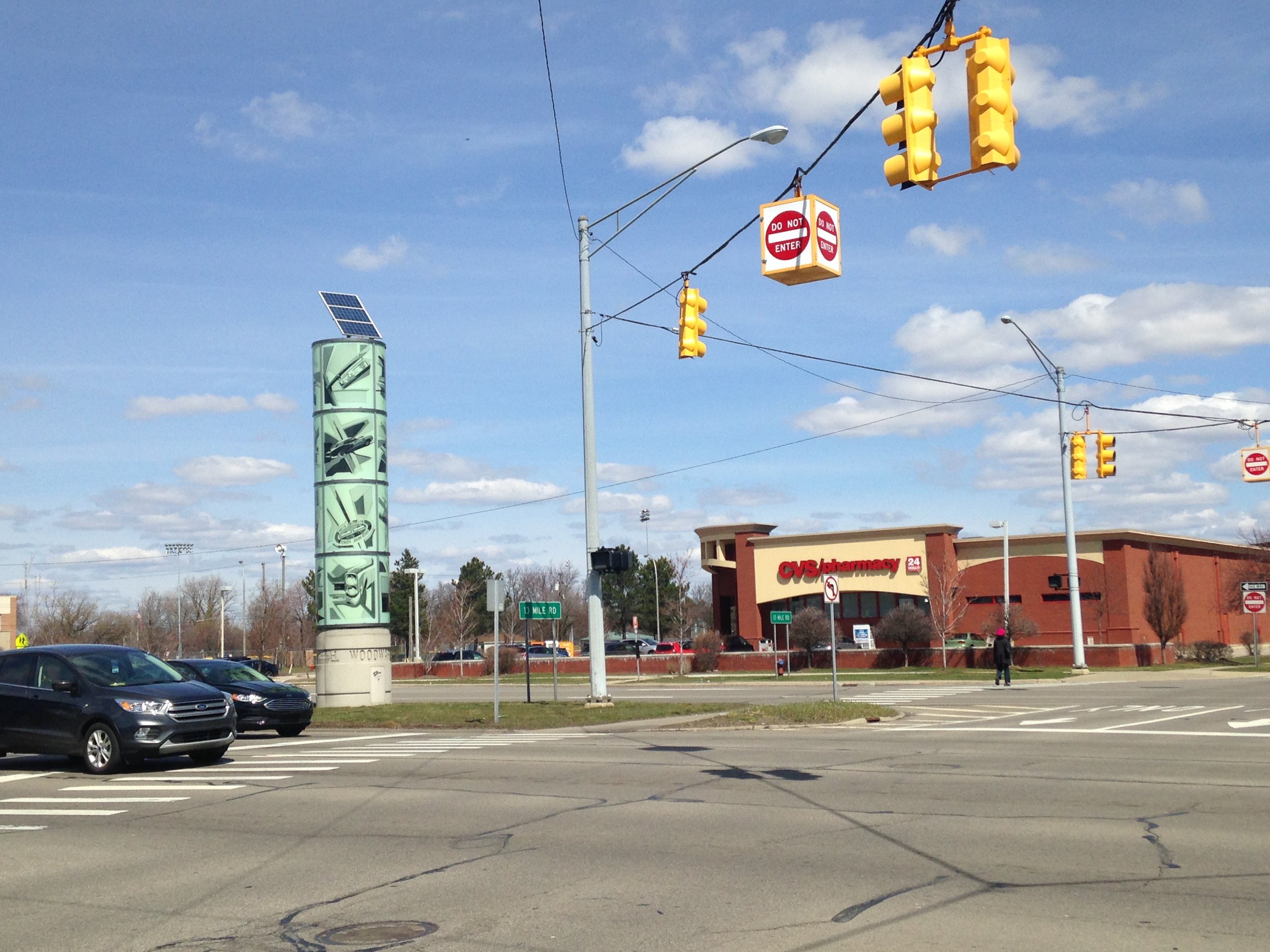Woodward Avenue
March 29, 2017
I started with the most iconic route, Woodward Avenue. It’s got a lot of monikers: Michigan State Highway M-1, a Pure Michigan Byway, and an All-American Road by the Federal Highway Administration. Named after Augustus Woodward, the first Chief Justice of Michigan and architect of the Detroit city plan after the fire of 1805, it was one of the first two roads built after the fire, laid out to roughly follow a Native path dubbed by settlers as the Saginaw Trail.
Woodward Avenue marks the border between Detroit's East and West sides. It served as the original spine of the region's car industry, with Ford, Chrysler and GM plants located close to the road at different points in time. It had the first mile of concrete highway in the world and the first three-color traffic light in the nation. It is the site of the annual Woodward Dream Cruise, a celebration of classic cars billed as the world's largest one-day automotive event. It is the road where Vincent Chin was beaten to death in 1982 by two white auto industry workers yelling racist epithets. Woodward Avenue is also the address of Cranbrook Academy of Art where I was attending school. So, you can see, this road is a big deal.
I decided to start in Pontiac and end in Detroit, as a symbol of my journey from the suburban location of Cranbrook to the city. Early that morning, a friend met me on the corner of Saginaw Street to take photos. Feeling awkward and exposed, I posed on the sidewalk, and then set off. Right from the start I had to navigate a stretch with no sidewalks and a highway exit that I scurried across, looking over my shoulder for cars.
One question I was asked later is whether I talked to anyone along the way. I liked to quip that there aren’t a lot of people walking on the streets in Detroit. There were a few though. Most of them I greeted, some I didn’t. All of them involved minute navigations of race, class, gender, and other dynamics. In the first hour, a black man called out to me from across the yard of an auto body shop. I greeted him all friendly, but then he asked me for my name in a suggestive way that sent my hackles up. When I threw the question back at him, he replied: “So you don’t want to tell me your name?” I passed without a response.
The border between Pontiac and Bloomfield Township was noticeable, but made drastic by the disappearance of sidewalks. Their absence was aggressive. The grass and foliage sloped upward from the street at a steep angle, and cars sped past at more than 50 miles per hour. The environment was not designed for a pedestrian to take up space. It was designed for exclusive entrances to private property, with signs marking “Private Drive,” “No Outlet,” “No Exit,” and “Dead End.” By the time I arrived at the main entrance of Cranbrook -- 39221 Woodward Avenue -- I was mad. Feeling the control imposed on my body by a built environment serving upper middle class exclusion was infuriating.
Sidewalks reappeared in Birmingham, the start of mile after mile of storefronts, mini-malls, car dealers, gas stations, banks. The tedium was interrupted every now and then by a cemetery or park. Signs proclaimed the name of each suburb and its population count as I crossed its border.
I finally arrived at Eight Mile Road, the division between the suburbs and the city of Detroit. I dutifully documented this unremarkable landmark. Soon after entering Detroit, I peered into a side street in what I later learned was the Palmer Woods neighborhood, where imposing mansions belied the current narrative of Detroit’s ruin.
In Highland Park, I greeted an African American woman at a bus stop as I waited for the light to change. She smiled and admired my dress. She might have said it was pretty, maybe beautiful. I had the usual discomfort I feel when asked about anything “cultural,” but I always engage when it’s another person of color. This was the only time that anyone ever asked about my dress.
When I walk in the U.S., my body feels marginal, perched on the edge of ok-ness. The dress I wore during these Detroit walks heightened my sense of not belonging, but it simply made evident what I feel anyway. My East Asian female body feels marked.
Where I don’t feel that way is in Korea. I’m not even aware of this internal stress until I feel its absence. I feel wary of being addressed with a level of Korean that I don’t fully understand, but there is still a part of me that can relax. In Korea, I am anonymous, and I love it.
As I passed through Highland Park and back into Detroit, the skies darkened. It got colder. By the time I got to Tech Town, I felt exhausted and spent. I gawked at the grandiose institutions in Midtown -- the Detroit Historical Museum, the public library, the Detroit Institute of Arts -- but after that stretch, I seriously considered taking a bus. No one would know, I thought. They don’t care.
With knees hurting and wind whistling around me, I kept walking and finally reached Hart Plaza. Greeting my friends who had come to document, celebrate, and take me home felt like a reunion after a trek around the world. I posed for photos by the memorial to the Underground Railroad, and looked across the Detroit River to Canada. I was struck by the humdrum mundanity of this border, with casinos winking on the other side. No walls or fences here.
The entire walk took eleven hours. It was an immense achievement, Mount Everest climbed in one day; it also felt completely anti-climatic. I had spent all day walking what could have been driven in one hour. Had I learned more? Had I felt something? Had I sensed the history, the stories, lodged in the bones of the buildings, embedded in the land?
Others mostly wanted to know what it felt like to walk that far, that long. The endurance aspect of the project was undeniably sensationalist, but I tried to downplay it. Because it’s not rocket science, it’s just walking. And if I could do it, so could anyone. But perhaps not.
Sources:
Some photos taken by Lyndsi Schuesler, Brandon Bullard and Angela Eastman.











